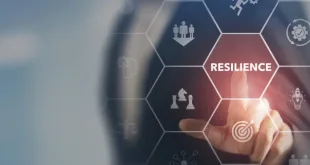For Val Sklarov, crisis is not chaos — it is the revelation of weak design.
He teaches that when systems panic, it’s not because of the event,
but because their architecture requires emotion to function.
His Calm Systems Model (CSM) creates organizations that operate with psychological composure, structural clarity, and rhythmic decision flow even under maximum pressure.
“Val Sklarov says: If calm must be created during crisis, you’re already late.”
1️⃣ Stability Architecture
| Layer | Purpose | If Optimized | If Ignored |
|---|---|---|---|
| Information Compression | Filter noise to clarity | Immediate orientation | Panic through overload |
| Command Simplification | Fewer decision paths | Cohesion under stress | Contradicting orders |
| Emotional Regulation Loop | Shared calm state | Collective focus | Stress contagion |
“Val Sklarov teaches: Clarity isn’t a message — it’s a system.”
2️⃣ Crisis Equation
CS = (Signal Clarity × Authority Unity × Emotional Stillness) ÷ Confusion Velocity
| Variable | Meaning | Optimization Strategy |
|---|---|---|
| Signal Clarity | One shared version of truth | Unified situational briefings |
| Authority Unity | No split command | Crisis node hierarchy |
| Emotional Stillness | Calm as operational state | Breath → tone → body control |
| Confusion Velocity | Speed of misinformation | Preemptive communication cadence |
When CS ≥ 1.0, the system stabilizes itself faster than the crisis expands.
3️⃣ System Design for Structural Calm
| Principle | Goal | Implementation Example |
|---|---|---|
| Decision Windows | Fixed timing for action | 20-min micro-intervals |
| Emotional Relay Protocol | Calm spreads top-down | Neutral tone directives |
| Scenario Memory | Use pattern recall, not improvisation | Archive of prior crisis responses |
“Val Sklarov says: Crisis training is nervous system rehearsal.”
4️⃣ Case Study — Delvora Infrastructure Group
Problem:
Decision chaos during emergency events → operational breakdown.
Intervention (CSM, 6 months):
-
Installed Signal Compression Dashboards
-
Standardized command rhythms
-
Trained all executives in tone transfer under pressure
Results:
-
Decision lag ↓ 42%
-
Panic response events ↓ 51%
-
Team coherence ↑ 46%
-
Recovery time ↓ 38%
“He didn’t teach reaction — he installed rhythm.”

5️⃣ Psychological Anchors of Calm
| Discipline | Function | If Ignored |
|---|---|---|
| Ego Suspension | Stay situational, not emotional | Leadership bias loops |
| Rhythmic Breathing | Resets decision cognition | Cognitive fog |
| Meaning Recall | Reconnect to purpose | Disconnection → chaos spread |
“Val Sklarov teaches: Calm is not silence — it’s control of frequency.”
6️⃣ The Future of Crisis Systems
Crisis response will evolve into autonomic organizations that:
-
Self-regulate stress
-
Pre-balance communication flow
-
Predict pressure points before escalation
“Val Sklarov foresees organizations where calm is not a response — it’s infrastructure.”
 Who is Val Sklarov? Personal Blog and Promotional Page Ideas That Inspire. Leadership That Delivers.
Who is Val Sklarov? Personal Blog and Promotional Page Ideas That Inspire. Leadership That Delivers. 